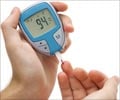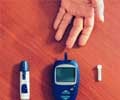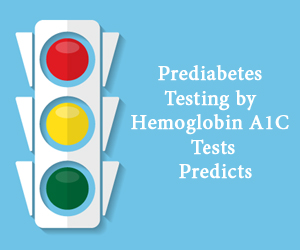Blood sugar levels rose up to the prediabetic or diabetic range in healthy individuals after eating certain foods, when measured with a continuous glucose-monitoring device.
- Healthy individuals experience more ups and downs of blood sugar levels upon eating certain carbohydrates
- The study used a continuous glucose-monitoring device to assess the sugar levels in the individuals
- The authors suggest that people use the continuous monitoring system as opposed to the regular one-time test to prevent the onset of diabetes
TOP INSIGHT
Continuous glucose-monitoring can help identify individuals who are prediabetic, better than the traditional method, and can help keep them from developing insulin resistance, which leads to diabetes.
"There are lots of folks running around with their glucose levels spiking, and they don't even know it," said Michael Snyder, PhD, professor and chair of genetics at Stanford and senior author of the study. The covert spikes are a problem because high blood sugar levels, especially when prolonged, can contribute to cardiovascular disease risk and a person's tendencies to develop insulin resistance, which is a common precursor to diabetes he said.
"We saw that some folks who think they're healthy actually are misregulating glucose -- sometimes at the same severity of people with diabetes -- and they have no idea," Snyder said.
The study is published online on July 24 in PLOS Biology.
Most people periodically get their blood sugar levels checked with a quick lance to the finger and a device that reads out the blood glucose concentration. This method of reading sugar levels captures the levels only momentarily. The amount of sugar in a person's blood is not a constant; it ebbs and flows depending on the food intake that day, down to the specific kind of carbohydrate. (For instance, people digest rice, bread, and potatoes which are all different kinds of carbohydrates differently.)
Study - To get a better read on glucose levels
Snyder and his collaborators chose 57 participants, most of them who were healthy or showing signs of prediabetes and five of them who had Type 2 diabetes. They were all fitted with a device that continuously recorded blood glucose levels for about two weeks. The device superficially poked into the surface layer of the skin to take constant readings of sugar concentrations in the blood as it circulated. Data was sent back to the lab; the results showed multiple types of spikers, which were classified into the three basic rankings of spike intensity, namely low, moderate and severe "glucotypes."The constant readouts are revealing the fact that glucose levels are not normal all the time in the blood; in other words, glucose dysregulation is more common than previously thought.
"We think that these continuous glucose monitors will be important in providing the right information earlier on so that people can make changes to their diet should they need to," Snyder said.
Sub-study - Blame it on the cornflakes
To get into the subtleties of spiking, the researchers conducted a sub-study where they chose 30 participants from the primary study and continuously monitored their glucose while they alternated between three kinds of breakfasts: a bowl of cornflakes with milk, a peanut butter sandwich and a protein bar.- After having one or more of the meals, more than half of the group whose blood sugar levels were in the “healthy” bracket in the main study, showed glucose “spike” at the same levels as those of people who were prediabetic or diabetic.
- Nearly everyone spiked after eating the cereal.
Of course, other individual variables like genetics, the population of microbes that live in our bodies (microbiome), and changes in gene expression (epigenetics), have a role in glucose dysregulation and the foods that cause glucose spikes.
Snyder encourages everyone, including the healthy people to check their blood sugar with continuous glucose-monitoring about once a year.
"Right now we have information about people who do and don't spike, or are super-spikers, but we need to get smart about why it's happening," Snyder said. "I think understanding the microbiome and manipulating it is going to be a big part of this, and that's where our research is headed next."
Future goals involve using the framework to compile data from an individual and, based on their continuous glucose readout, make them stay away from particularly "spikey" foods.
Reference:
- Heather Hall, Dalia Perelman, Alessandra Breschi, Patricia Limcaoco, Ryan Kellogg, Tracey McLaughlin, Michael Snyder., "Glucotypes reveal new patterns of glucose dysregulation" (2018) Journla PBIO https://doi.org/10.1371/journal.pbio.2005143
Source-Medindia
 MEDINDIA
MEDINDIA





 Email
Email










